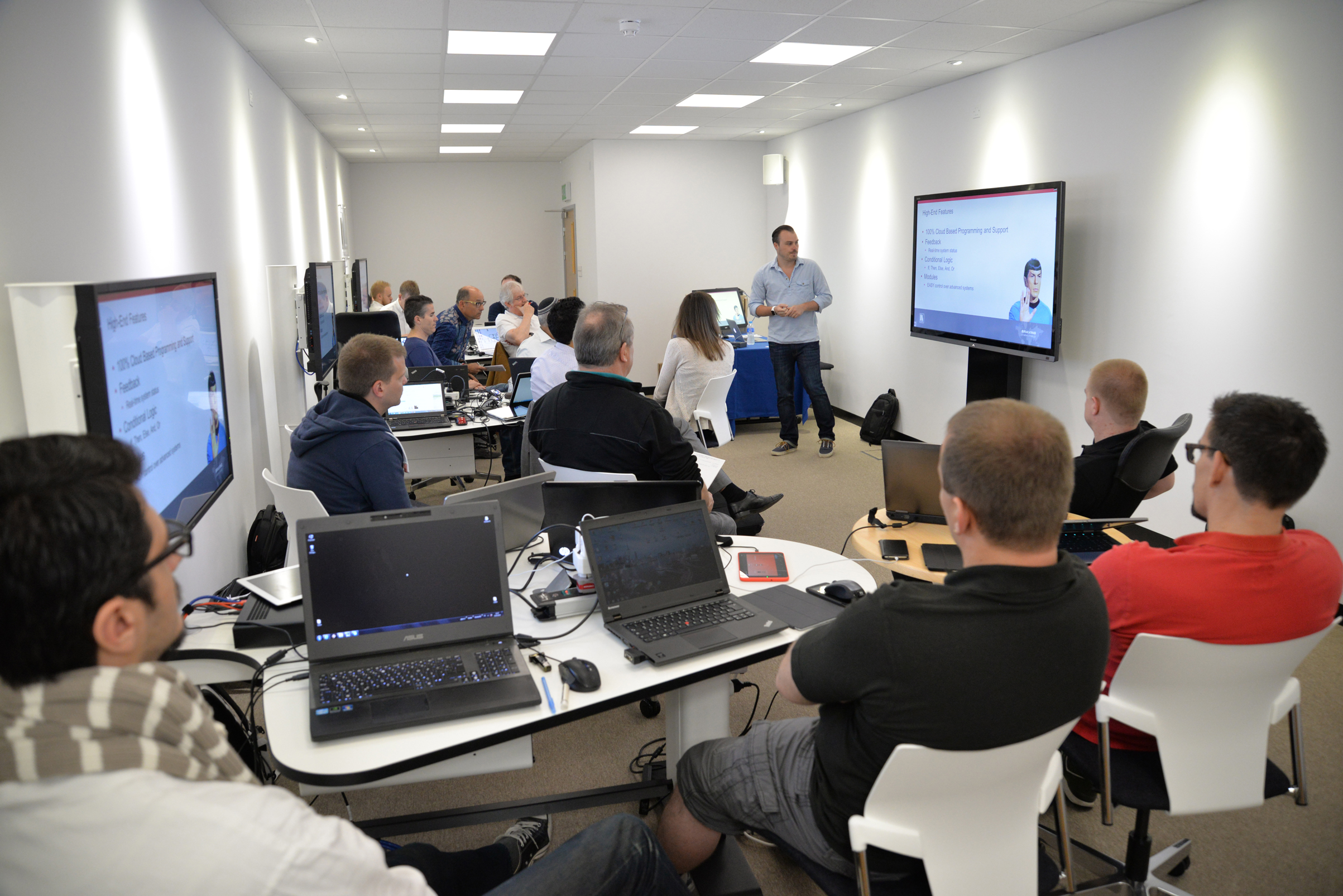
AV technology looks set to enter – some would say has already entered – a new world, a world that brings significant opportunity to those prepared to embrace it.
There was a time when every English schoolchild knew the legend of the arrogance of King Canute (or Cnut). Ruling England, Scotland, Denmark, Norway and parts of Sweden in the 11th century, he was famously carried on his throne by his courtiers to the ocean’s edge where he commanded the waves to recede.
That legend is now widely used as a metaphor for the futility of attempting to deny inexorable change and inescapable events – and has been used to describe those who see an AV future that has not been wholly subsumed by the world of IT. The question is no longer whether that will happen – but rather, has it already happened?
Three key changes in recent times are, perhaps, noteworthy. The first is the growing presence of traditionally IT-focused companies like Microsoft and Cisco in the AV space. A recent high-profile example was the announcement in January by Microsoft of its Surface Hub, in which the company is making a determined play for the collaboration market. Crestron took the opportunity presented by InfoComm to show how its product offering could be integrated with Microsoft’s.
The second is the increasing prevalence of IP-based networks as a way of connecting devices together – whether locally or remotely. The third, and possibly most significant change, however, seems to be at the customer end, where integrators are as likely to be talking to IT professionals as to AV specialists.
It’s happened – or has it…?
Brian Davies, European technical director at AMX, is clear. “Our slogan used to be ‘It’s your World. Take Control’,” he says. Now, it’s ‘AV for an IT world’. That tells you everything about how we see the market. AMX has long shipped products that the IT department feels comfortable with. They’re Linux-based, for example, and support IPv6. They’re fundamentally acceptable to an IT buyer, not least because those products allow their policies – such as security – to be observed.”
He has an ally in Kevin Porter, who is manager, control and collaboration at Kramer. “Today, many people are lecturing on AV/IT integration – giving the same lectures with the same content as they were three or four, perhaps even five – years ago,” he smiles. “As far as I’m concerned, AV/IT integration is not happening – it has already happened. I see this first hand. We don’t have AV managers really any more. AV is managed by IT, who want it scripted, automated, secure and with easy management processes.
“In fact,” he remarks, “I’ve even seen the AV Department renamed ‘The Department of Rich Media Content’.”
David Jones, international sales manager at Lightware, is no less clear than Davies or Porter – but with the opposite message. “Almost any serious company will demand a separate system for AV outside the sphere of IT,” he claims. “In fact, most IT managers will simply not allow any AV system on their network. Security fears and the potential to cause bandwidth constraints are the two main reasons we come across – but suffice it to say that we are a very long way from having AV integrated as standard into the IT world.”
He isn’t alone either. “While integration is becoming increasingly popular, there are certain settings, such as education and healthcare, where this is not the case,” claims Andy Nolan, VP UK, Ireland and Northern Europe, Lifesize. “Many organisations still have separate AV and IT teams. AV teams usually handle events and high-profile meeting management and set-up – and that won’t change anytime soon.”
The two worldviews couldn’t be more divergent.
On the ground
That’s how manufacturers see it – but what about the ‘on the ground’ reality?
“Integration of AV with IT is not quite yet a ‘done deal’, nor is it the norm in the majority of today’s AV installations,” says Roland Dreesden, managing director of integrator Reflex. “I’m certain that it will end up being the case, but I don’t think it’s true to say that it is correct at the moment.”
“There are numerous dedicated AV teams within organisations, and highly skilled AV people within the industry supporting these teams,” he continues. “Most IT professionals are still not fully skilled up in all aspects of AV. That’s particularly true with audio, which is where the challenges are. It’s an area demanding a very specific skill set.
“I’m confident that external specialist AV experience will be required for some time yet,” Dreesden concludes.
“We have certainly seen a change, and it’s one we’ve responded to by creating a dedicated team for our VC and UC installations who are fully trained and widely experienced in networking infrastructures,” notes David Willie, head of communication and collaboration technologies at integrator Saville Audio Visual. “This means they are able to talk the same language as the client IT teams and advise them of any demands and impacts that the new deployment may make on existing structures. For one client, our input enabled them to reduce the bandwidth overload and to incorporate vital redundancy into the network.”
“There is also,” he adds, “a definite and perceptible rise in end-users who want to be able to control the whole of their AV real estate centrally – and that can mean serious IT integration, especially across a geographically dispersed enterprise.”
Lifesize’s Nolan noted that the degree to which AV has become integrated as part of the IT world is somewhat dependent on the market sector involved – and Stijn Ooms, who is director of technology at Crestron, sees important distinctions between applications.
“There are some important considerations for distributing AV signals over the IT infrastructure,” he says, “mainly based around latency and bandwidth. Streaming is great – but not always the right choice. The advantages of streaming are cheap infrastructure, BYOD distribution, limitless distance and broad access to rooms – while point-to-point AV distribution can make sure there is no latency, no network configuration issues to take care of, no compression to worry about – meaning the delivery of video at best quality.”
For more AMX control systems
For more Kramer processing solutions
For more Lifesize videoconferencing solutions
For more Lightware signal management
For more Saville AV services
For more Reflex system design integration







